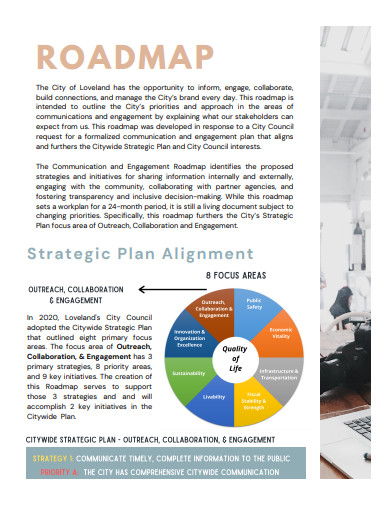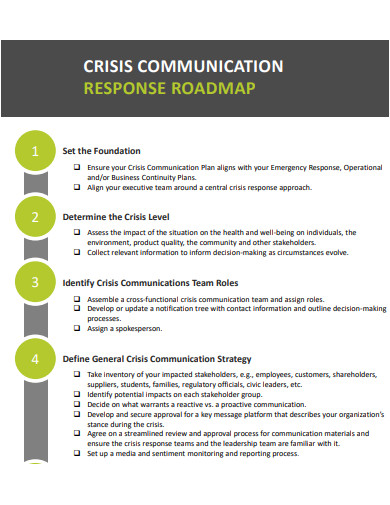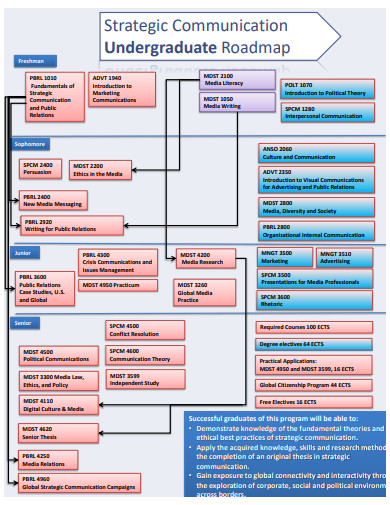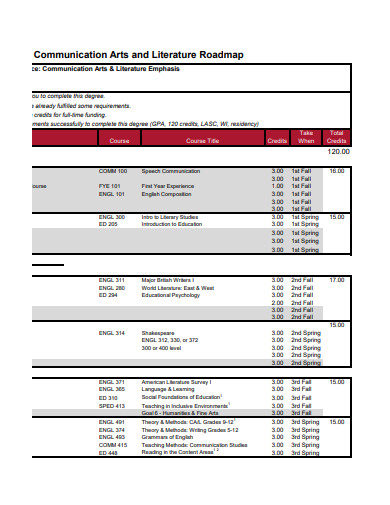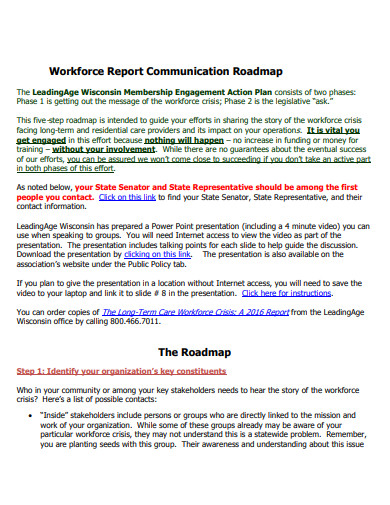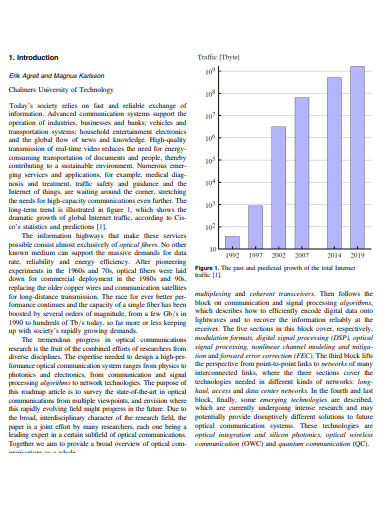Successful businesses use communication in a strategic way. In fact, one of the most significant methods to strengthen a brand is to design a corporate communication strategy. Businesses build trust by sharing real information about themselves and responding to tough circumstances. When communications teams spend a lot of effort into crafting messaging and telling stories about their business, it pays off. Those who have plans in place are the ones who are best ready to deal with obstacles and embrace change.
10+ Communication Roadmap Samples
A strategic communications plan establishes the structure for a company’s internal and external messaging. It serves as a roadmap for how a firm interacts with stakeholders, employees, consumers, the media, and regulators. What information to offer, who the target audience is, how regularly to provide updates, and which channels are appropriate to deliver these messages are all part of the plan. The way a firm handles communications at times of crisis, transition, and the launch of campaigns and new products is shaped by having a plan in place.
1. Marketing Communication Roadmap
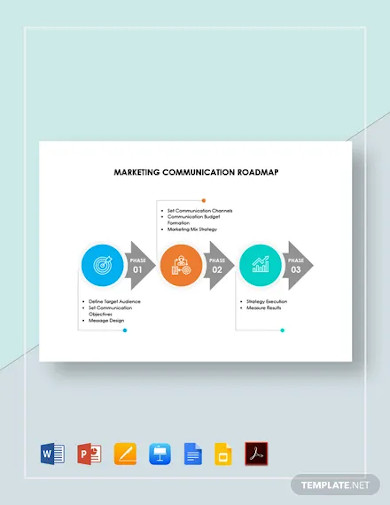
2. Internal Communication Roadmap
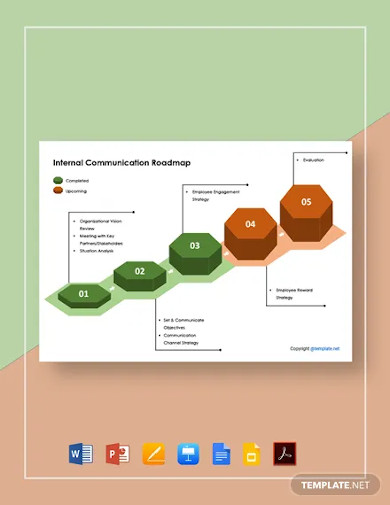
3. Corporate Communication Roadmap
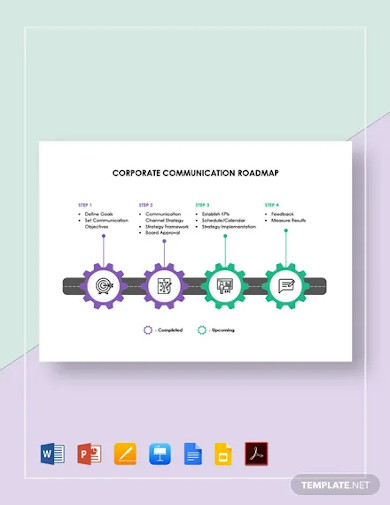
4. Communication and Enagegement Roadmap
5. Technology Communication Roadmap
6. Crisis Communication Response Roadmap
7. Strategic Communication Undergraduate Roadmap
8. Communication Arts and Literature Roadmap
9. Workforce Report Communication Roadmap
10. Roadmap of Optical Communications
11. One Page Communication Roadmap
Importance of Communication Roadmap
A corporate communications strategy can help you communicate with your target audience in a clearer and more effective manner. You want to be acknowledged in the right location and at the right time, whether your audience is your own staff or potential consumers. It is critical to establish a framework to accomplish this. When life throws you a curveball, having a communications plan in place will help your company prepare for any unforeseen changes or problems.
It will also be easier to recover from any public relations concerns if you have a plan in place. Answering to negative comments and being transparent about errors, for example, can help your business gain trust and get back on course in the eyes of customers and future clients.
By taking preventive measures to being included in debates about your brand or sector, you can demonstrate that your brand values involvement by communicating effectively and clearly.
Internal communications should be part of a corporate communications plan to assist establish and build a transparent company culture. This can increase employee engagement by involving team members in discussions about the company’s direction and values.
If a team experiences sudden changes, you’ll be better equipped to communicate those changes in a way that makes employees feel safe and cared for if you have a plan in place for how to convey that information, first with those who are directly affected and then with the rest of the organization.
Knowing and comprehending your listener is the first step in effective communication. Which decision maker(s) are you writing for in this scenario, if a crisis communication plan is for stakeholders? Employees, investors, customers, local government officials, and media outlets are all examples of stakeholders. A basic communication strategy should have a stakeholder analysis as well as protocols for what to say in those talks. You might also include a business summary, prospective communication issues, and a risk management framework.
FAQs
How do you develop key messages?
Create the copy and creative resources you’ll need to get your message through. Consider what you’re attempting to say and how you may make it as clear and understandable as possible for your target audience. It’s also worth thinking about the message’s format: should it be delivered at a meeting, via email, or via video? What is the best way for the audience to react to the announcement and ask questions about it? All of these factors should be considered when generating material for internal and external communications.
How do you identify and segment targets?
Consider who your intended audience will be and how they will differ from one another. Knowing your target audience will allow you to adjust your content and tone to their preferences. To increase the visibility of your content, use evaluation and social listening to establish your audience’s favorite social channels and the best types of material. It’s critical to segment your audiences because the way your firm provides information with employees will likely differ from how it presents to the board of directors or investors.
If you want to see more samples and formats, check out some communication roadmap samples and templates provided in the article for your reference.
Related Posts
FREE 10+ Quality Roadmap Samples in MS Word | MS Excel | PowerPoint | Apple Pages | Google Docs | Google Sheets | Slides | Keynote | PDF
FREE 10+ Timeline Roadmap Samples in MS Word | MS Excel | PowerPoint | Apple Pages | Google Docs | Google Sheets | Slides | Keynote | PDF
FREE 10+ Goals Roadmap Samples in MS Word | MS Excel | PowerPoint | Apple Pages | Google Docs | Google Sheets | Slides | Keynote | PDF
FREE 10+ HR Roadmap Samples in MS Word | MS Excel | PowerPoint | Apple Pages | Google Docs | Google Sheets | Slides | Keynote | PDF
FREE 10+ Personal Roadmap Samples in Word | Google Docs | Google Slides | Apple Keynote | PowerPoint | Apple Pages | PDF
FREE 10+ Development Roadmap Samples in Word | Google Docs | Google Sheets | Excel | Slides | Keynote | PPT | PDF
FREE 10+ Training Roadmap Samples in MS Word | Google Docs | Google Slides | Apple Keynote | PowerPoint | Apple Pages | PDF
FREE 10+ Management Roadmap Samples in Word | Google Docs | Google Sheets | Excel | Slides | Keynote | PPT | PDF
FREE 10+ Program Roadmap Samples in Word | Google Docs | Google Sheets | Excel | Slides | Keynote | PPT | Pages | PDF
FREE 10+ Project Roadmap Samples in MS Word | Google Docs | Google Slides | Google Sheets | PPT | MS Excel | Apple Pages | Apple Numbers | PDF
FREE 10+ Process Roadmap Samples in MS Word | Google Docs | Google Sheets | PPT | MS Excel | Apple Pages | Apple Numbers | PDF
FREE 10+ Strategy Roadmap Samples in MS Word | Google Docs | Google Sheets | PPT | MS Excel | Apple Pages | Apple Numbers | PDF
FREE 5+ Sales Plan Roadmap Samples in PDF
FREE 15+ Software Roadmap Samples in PDF
FREE 6+ Business Roadmap Samples in PDF

